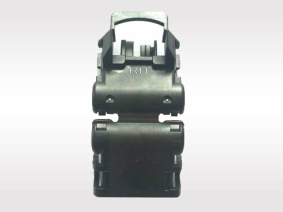Design steps of stamping die
Step 1:
This paper analyzes the feasibility of the product of the designed mold. Taking the computer case as an example, the assembly analysis of each component product drawing is carried out by using the design software, that is, the set of drawings mentioned in our work, so as to ensure the correctness of the product drawings before the mold design. On the other hand, we can be familiar with the importance of each component in the whole chassis, so as to determine the key size, so as to ensure the mold design This paper will not introduce in detail the specific set diagram method.
Step 2:
The work to be carried out after the product analysis is to analyze the product, what kind of mold structure is used for the product analysis, and the product is arranged to determine the punching content of each process, and the product development is carried out by using the design software. When the product is unfolded, it is generally carried out from the follow-up engineering. For example, a product needs five processes, and the stamping is completed from the product drawing when the product is expanded To the fourth project, and develop a graphic copy, and then carry out the work of the previous project, that is to complete the product development work of the five projects, and then carry out detailed work. Note that this step is very important, and at the same time, it needs to be particularly careful. If this step is completed well, it will save a lot of time in drawing the mold drawing. After determining the stamping content of each project, including In the forming die, the internal and external lines of product material thickness are reserved to determine the size of punch and die. The method of product development is not described here, but will be specifically introduced in the product development method.
Step 3: material preparation, according to the product development drawing, determine the template size in the drawing, including the fixed plate, discharge plate, punch and die, insert, etc., and pay attention to the material preparation directly in the product development drawing, which is of great benefit for drawing the mold drawing. I see that many mold designers directly prepare the material by manual calculation on the product development drawing. This method is efficient If it is too low, drawing the template specification and size directly on the drawing and expressing it in the form of assembly drawing, on the one hand, it can complete the material preparation, on the other hand, it can save a lot of work in the work of mold accessories, because in the drawing of each component, it only needs to add positioning, pin, guide post and screw hole in the preparation drawing.
Step 4:
After the material preparation is completed, the drawing of the die drawing can be fully carried out, and a copy of the drawing can be made in the preparation drawing to draw the components, such as adding screw holes, guide pillar holes, positioning holes and other hole positions, and the wire cutting of various holes in the punching die is required,
In the molding mold, the forming gap between the upper and lower molds must not be forgotten, so the mold drawing of a product has almost been completed 80% after these works are completed. In addition, in the process of drawing the mold drawing, attention should be paid to the following: each process, including fitter marking, wire cutting and other processing procedures, has a complete production layer, which is good for wire cutting and drawing management For example, color discrimination, size marking is also a very important work, but also the most troublesome work, because it is too time-consuming.
Step 5:
After the above drawings are completed, the drawings can not be issued yet. It is necessary to proofread the die drawings, assemble all the accessories, make different layers for each different mold plate, and analyze the die assembly with the same datum such as the guide pillar hole, and put the product development drawing of each process into the assembly drawing to ensure that the hole position of each template is consistent and the upper and lower die of bending position are consistent Whether the clearance fit is correct. After the above work, the mold drawing of a product is officially completed. The above is the general introduction of the direction and steps in the mold design. At the same time, each mold designer has his own method. No matter what, the successful completion of the design work. Besides, the work efficiency is also very important, so I will not talk about it here.






